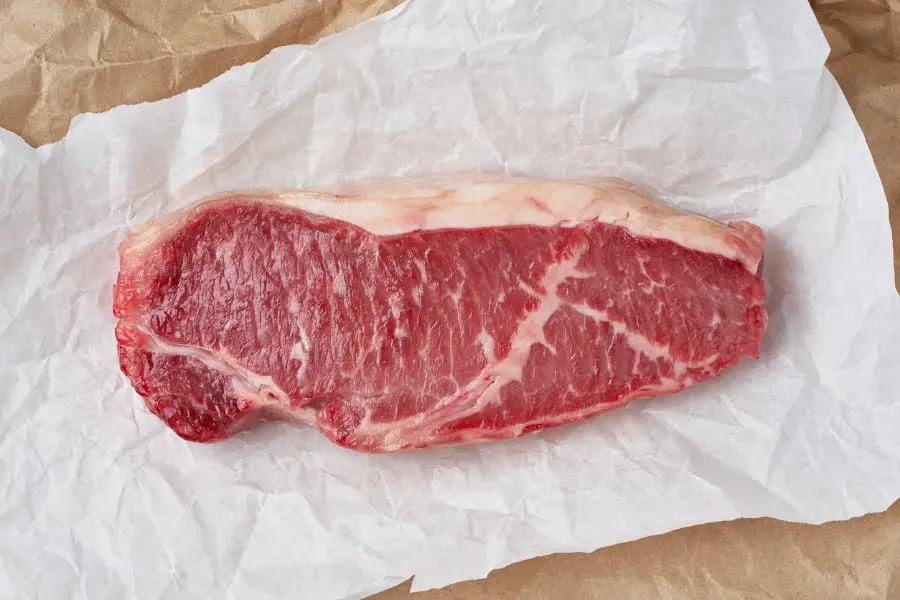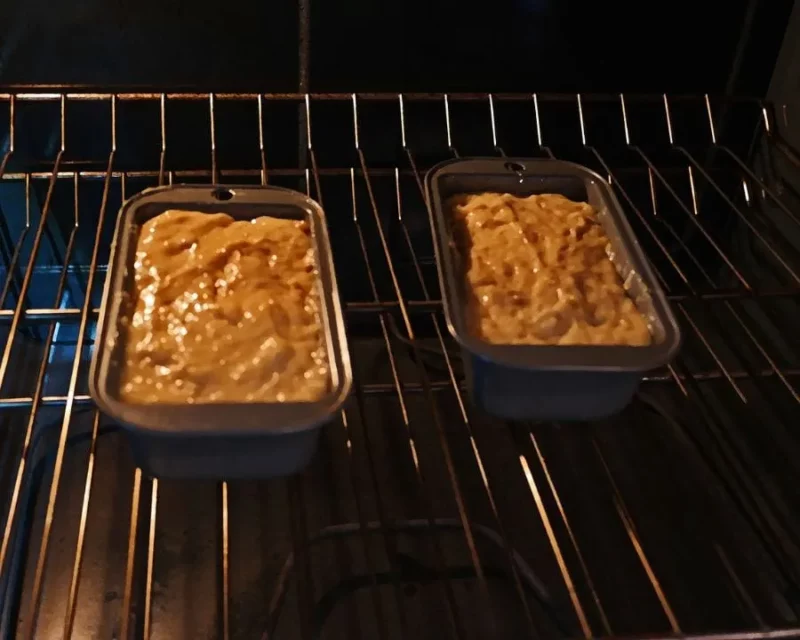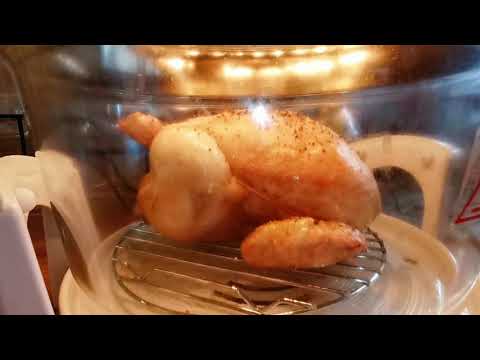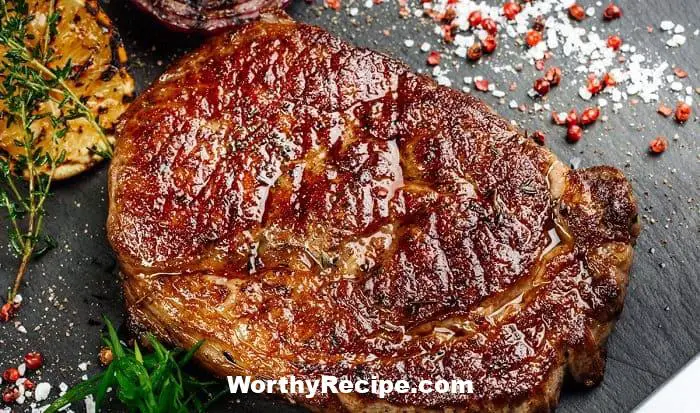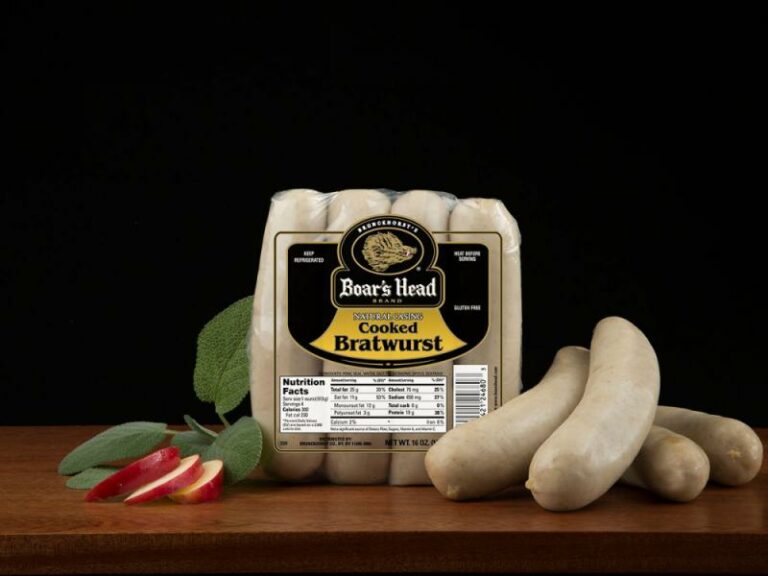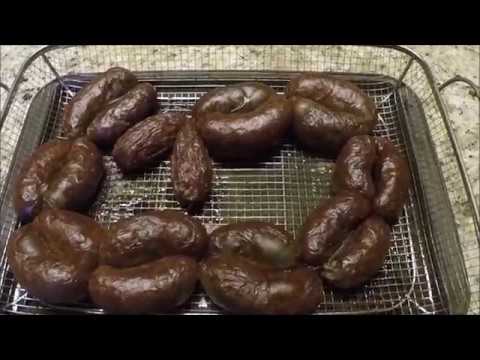Why Did My Steak Turn White While Cooking?
Steaks are a delicious staple in many diets. They can be cooked in various ways, and their flavors enhanced by an array of seasonings. However, have you noticed that sometimes when cooking steak, it turns white? Don’t worry; this is not something to be alarmed about as it’s quite common. This article will explore the reasons why steaks turn white while cooking, the types of meat affected, cooking methods that increase whitening, storage conditions that cause discoloration, prevention methods to avoid a discolored steak and real-life case studies.
The Science Behind Steak Turning White
Before we get into why a steak might turn white while cooking, we must understand the science behind this phenomenon. Upon heating meat, specifically beef or other mammals’ muscles (which make up most cuts of steak), hemoglobin molecules inside these muscle fibers are rapidly denatured. The iron atom in each molecule loses its electron and oxidizes to form metmyoglobin – a molecule responsible for producing characteristic brown-red colors in healthy meats.
Denaturation results from changes in protein structure triggered by heat or chemicals present in marinades or brines. These changes lead to a loss of structure and function resulting in the protein unfolding and tangling itself up like uncooked spaghetti strands. Heating proteins further makes them lose their flexibility resulting in irreversible coagulation through which they stick together forming clumps generated by the formation of new chemical bonds.
Therefore, when heat is applied for too long or at temperatures beyond 140°F/60°C (the temperature at which myoglobin begins to denature), myoglobin molecules become denatured indeed and release water bound within their chemical bonds as they tend to contract within muscle fibers making them appear white rather than brownish-red because metmyoglobin is oxidized as hemochrome giving meat an off-putting color similar to dryer high-fat bacon.
Types of Meat Affected
Now that the science behind meat discoloration is clear, we can identify which kinds of meats are most likely to turn white while cooking. It’s key to remember that older meat inherently tends to turn slightly grayish or brownish in color – this is harmless and can be cut out if desired. However, when steaks turn white, it usually means they’re being cooked for too long at high temperatures.
Thinner cuts like flank steak and skirt steak with less internal fat content dry out faster when exposed to heat resulting in a higher likelihood of producing whitening rings on their surfaces. Leaner pork and chicken breasts also tend to appear white as they contain very little fat molecules resulting in easy dehydration.
Cooking Methods That Increase Whites on Steaks
Certain cooking methods increase the chances of producing white on a steak. These include boiling, poaching, braising, stewing or otherwise moist cooking methods. These methods exacerbate the loss of moisture within muscle fibers because these dishes are abundant in liquid for meats to absorb but fail to crisp up its surface leading muscle fibers beneath being exposed for longer periods making them tougher drier and chalky.
On the contrary, utilizing any dry heat method like grilling or frying retains protein structure better minimizing moisture escape reducing water release into the meat as well as ensuring that only juices formed through optical illusions upon first contact with heat are lost rather than natural seasoning dropping out from cell decomposition..
Storage and Aging Conditions That Can Cause Whitening
The way meats are stored can also lead to discolouration during cooking. When stored improperly (like when leaving raw beef exposed on shelves without adequate packaging), these items lose humidity resulting in meat’s water content decreasing causing dehydration affecting hemoglobin potential oxidation decreasing browning potential upon subsequent heating.
Aging done improperly can also lead to discoloration due to enzymes responsible for breaking down proteins becoming inactive under unusually arid storage conditions. Consequently, reduction in protein breakdown activity witnessed causes muscular tissues to appear as white due to slight browning inhibition upon cooking.
Prevention: How to Keep Steaks from Turning White While Cooking
Here’s what you can do if you’re tired of seeing white steaks every time you cook them:
- Temperature control techniques – To avoid overcooking steak, use a meat thermometer when cooking rather than eyeballing doneness allowing internal temperature classification based on beef or pork type and desired doneness.
- Medium-Rare Steak:
- 130-135°F/54-57°C
- Internal color is pinkish-red center with exterior brown crust
- Light juicing
- Medium Steak:
- 140-145°F/62-63°C
- Internal color is light pink center showing gray area next to the surface with brown all around.
- Considerable juice extraction on carving
- Choosing appropriate cuts – Thicker cuts that contain more marbling helps retain moisture and increases the likelihood of avoiding an off-coloring phenomenon as their higher fat content means they release less moisture during cooking resulting in better searing and water retention capability.
- Other general tips – Allow your meats to rest before cutting or serving to ensure muscle fibers have ample time to ‘relax’ making them tender while maintaining proper juiciness.
Case Studies: Real Life Examples of Discolored Steaks
Meat experts and professionals have numerous stories about past experiences with discolored steaks.
A global slow-cooked dish called carbonnade flamande, served traditionally in Belgium consists mainly of beef suitable for stewing but was inexplicably appearing chalky during preparation when chefs increased fire heat.
Another occasion included seasoned sirloin that looked healthy after refrigeration yet it turned white while being grilled on high-flame causing panic among customers and community.
These real-life examples demonstrate the importance of proper meat preparation and seasoning while following safe cooking procedures, including appropriate temperature control measures rather than relying only on experience to achieve the perfect steak.
Conclusion
Steaks are a treat enjoyed by many, but it’s essential to understand why they might turn white during cooking. The primary causes are denaturation of proteins due to heat, fat content in cut selection, storage temperature and humidity, aging conditions, and unsafe cooking practices. Be sure to choose the right cuts that have higher marbling contents and thickness, exercise safe food-handling practices by utilizing a meat thermometer and proper cooking techniques to ensure your steaks maintain their distinct brown-red hues for amazing results.
Q&A
Q: Can steaks go bad before cooking, causing it to turn white?
A: Yes, if the steak has been in the refrigerator for too long or if it was not stored properly, bacteria may have grown on the meat. This can cause the color of the steak to change and turn white while cooking.
Q: Is it harmful to eat a cooked steak that has turned white?
A: It depends. If the steak turned white due to freezer burn or because of a change in pH levels, it is still safe to eat. However, if the steak turned white due to spoilage or bacteria growth, it can be harmful and should not be consumed.
Q: How do I prevent my steaks from turning white while cooking?
A: To prevent your steaks from turning white while cooking, make sure they are fresh and stored properly. You can also marinate your steaks before cooking them, which helps keep them moist and prevents them from drying out.
Q: Can high heat cause a steak to turn white?
A: Yes, high heat can cause a chemical reaction in meat proteins that changes their color and texture. The reaction is called denaturation, and it can cause your steak to turn white while cooking. To prevent this from happening, cook your steaks at lower temperatures for longer periods of time.
